Carnival in Eastern Slavonia: An Intro to February Masquerade Traditions (Part I)
February 16th, 2022 - In Croatia, after Christmas and New Year's, February is usually reserved for the Carnival, which is tightly connected with the Masquerade tradition that leads to the Carnival as an intro to Lent and later, to Easter. Each region has its own tradition that has been maintained for centuries. A look into Carnival in Eastern Slavonia.
The Carnival (Poklade) is a calendar custom between the Epiphany (January 6) and Lent (Korizma). It is marked by masked processions and parties, merriment, madness and debauchery, and an abundance of food and drink. The highlight of the event is the last Sunday, Monday, and Tuesday (Shrove Tuesday) before Ash Wednesday. Its roots don’t have anything related to Christianity - primarily of magical, apotropaic significance. Any disguise, clothes worn on the wrong side, deafening noise, pouring ashes, and more, should drive away the winter, demons, and evil forces that repel their actions from people, livestock, homes, and crops. Carnival events in the Croatian folklore tradition can be divided into two main types. One type is referred to as lupercal; they are seemingly more archaic, common in the rural and livestock areas. Participants are groups of men dressed in animal skins, with bells hung on their bodies or worn on their hands. The second type of carnival event in Croatia is saturnal; they occur in cities, particularly common on the Adriatic coast and island areas. These usually contain less magical features and are more focused on entertainment and social criticism. As mentioned before, even though the event overlaps with Christian holidays, the Catholic Church has been trying to suppress these traditions for centuries because of the opposing nature to every existing authority throughout history.

Photo credit: Marko Miličević - načelnik Općine Ivankovo
The Eastern Slavonian Carnival is used for the hedonistic type of “partying” before Lent - a time for mourning, renunciation, and penance. Every village has its own day for organizing the Carnival, it all depends on when Lent starts. Carnival time starts with Masquerade (Maškare), more precisely, the procession of rural masquerades with participants disguising themselves in various characters. Men are mostly dressed as women and women are dressed as men. Masked groups visit every house in the village and sing in front of them for gifts like sweets, food, and drinks. After that, “masqueraders” thank the hosts and continue their journey through the village looking for more gifts. However, in the 2000s, these masked groups became groups of children who would go on tour all over the village after school, singing and seeking gifts from villagers. If a host doesn’t react to the singing of masked children and doesn’t come out of the house, houses get “attacked” by rotten eggs. This tradition probably came into relevancy in the last 20 years or so because it is impossible to find a legit source about it and it is not a really pleasant experience, especially if you need to clean rotten eggs off the walls of your house.
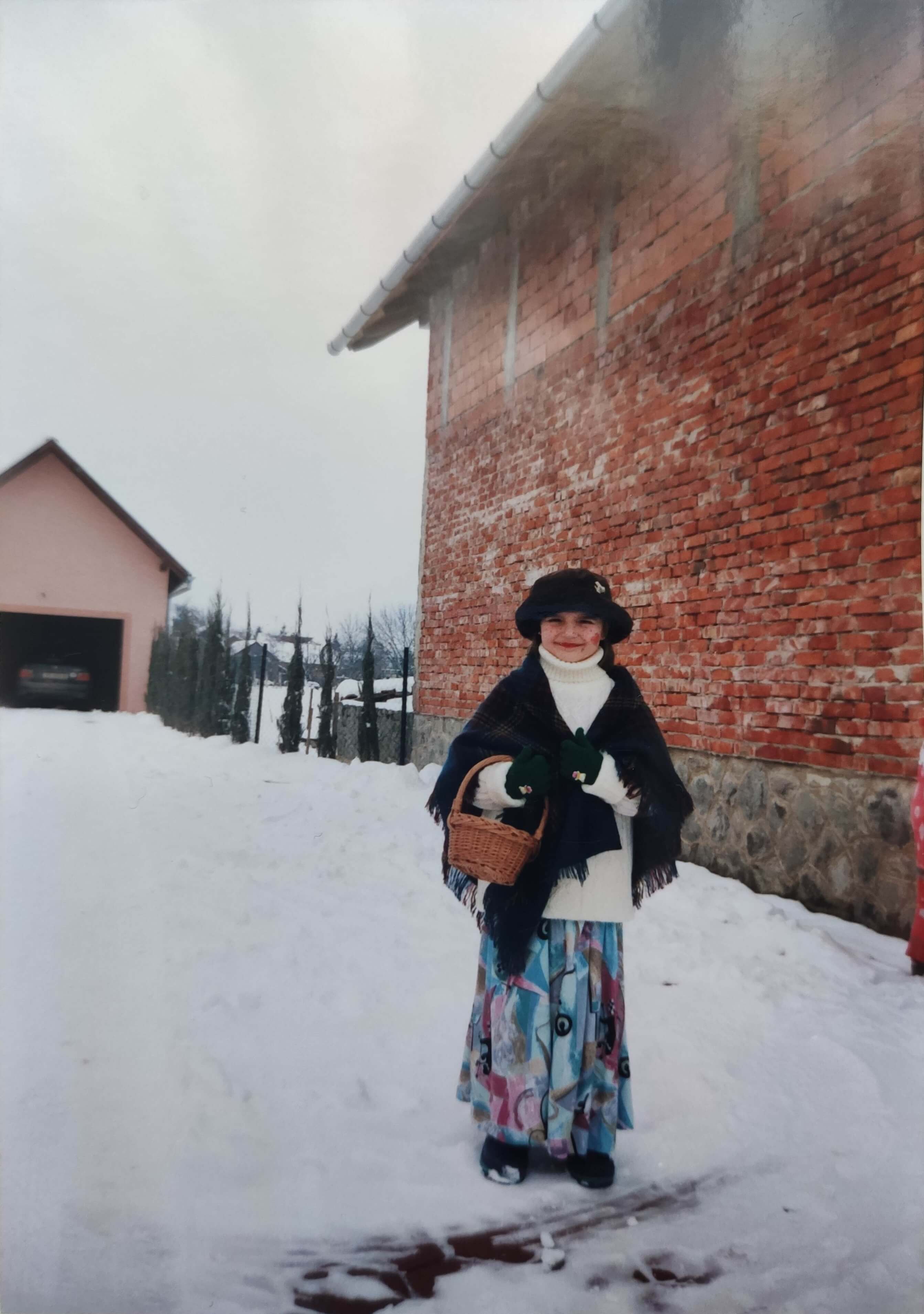
My sister ready for masquerade with her friends, at the beginning of 2000s - Private album
A huge part of the Carnival in Slavonia is the so-called Carnival riding (Pokladno jahanje) which is a tradition that goes back all the way back to the 18th century. Carnival riding came to prominence during Military Frontier (Vojna Krajina) and some Slavonian villages maintained it until after Second World War. The custom was revived after the Homeland War and again became one of the most important events in Slavonia. Riding through the village, the riders would stop at houses of certain families who treated them with Slavonian food and drinks and they usually repay them with a song. After leaving the host's house, the horsemen would sing “Domaćine, od srca ti hvala, što nam tvoja desna ruka dala” (Thank you, hosts, thank you from the bottom of our hearts, what your right hand has given us”). This type of celebration is still going strong and has more and more riders every year, in an effort to preserve the tradition and identity of Slavonia. What is also characteristic of this Carnival is that in some places in Slavonia masked plowmen come with the plow to plow village streets or yards and for that job they get rewarded with sausages, sweet cakes, and donuts (in Eastern Slavonian slang “krofne”) by hosts.
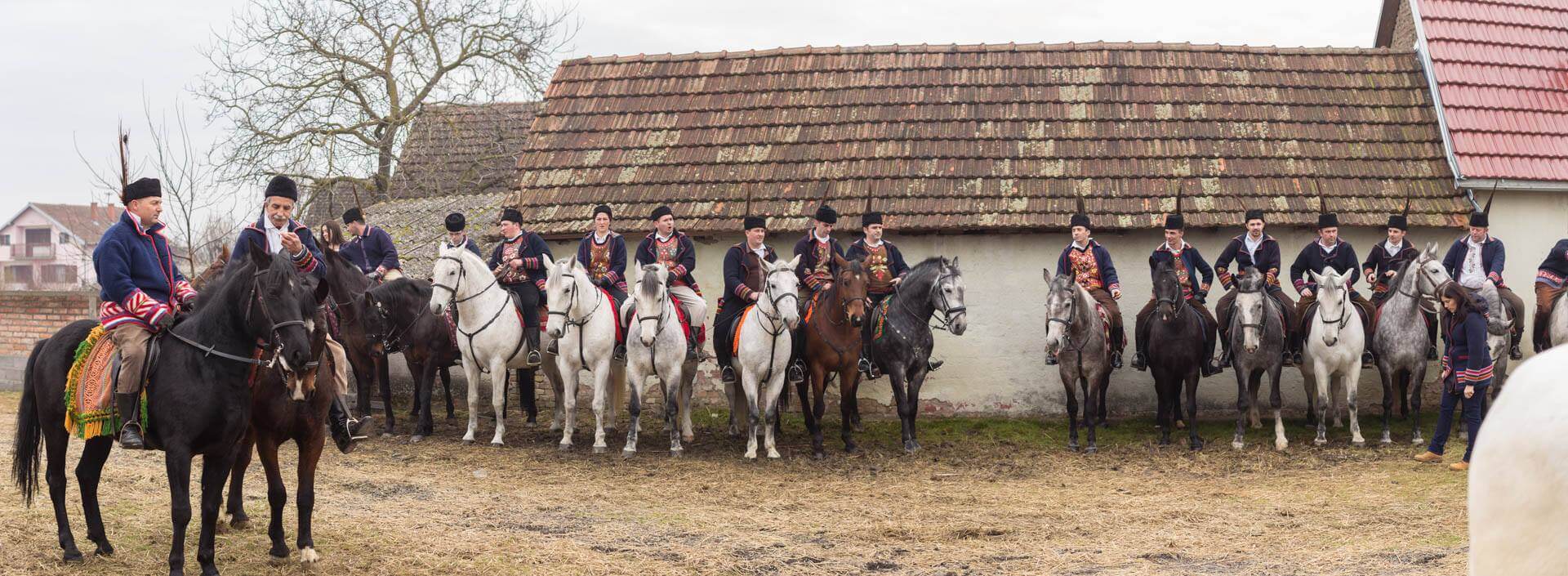
Horsemen getting ready to start their tour through the village - Photo Credit: Marko Miličević - načelnik Opčine Ivankovo, Facebook page
This event, as mentioned before, is an intro to Lent and lastly Easter. Apart from organized games and parties, Carnival is also a great place to introduce the traditional food and drinks Slavonia has to offer. However, that needs its own article. Until next time.
For more, check out our lifestyle section.
My Two-Day Adventure From Ivankovo to Zdenci: Travel Connection Issues in Slavonia
February 10, 2022 - After World War II, a lot of people migrated from Dalmatia, Herzegovina, and more to Slavonia looking for better lives. They mostly traveled with coal-fired trains that would take a week to get to their destination. However, that was in the 1950s and 1960s. In the 21st century, in 2022, my trip to Zdenci, a village located in the east of Virovitica - Podravina County, took me two days by public transportation - train. A look into the travel connection issues in Slavonia in the 21st century.
Railways and trains, as public transportation and a part of the economy, always had a huge role in Croatian history. The first railways in the territory of today’s Republic of Croatia were built in the 19th century, which connected Međimurje with Hungary and Slovenia, only 35 years after the first railway was built in England. Croatia, which was part of the other reigns at that time, realized its potential as a favorable traffic center that connected Southern Europe with the West and more. Slavonia has become part of one of the most important railway tracks named Corridor X - a Pan-European line that goes through Vinkovci, a city that became one of the most important railway centers in Europe. Older workers fondly remember tons and tons of cargo going through Vinkovci and full trains which would transport passengers every 4 minutes. They also highlight the extended travel which was caused by worn-out railways which can’t withstand newer locomotive trains and that impact can be especially seen on Vinkovci - Zagreb line. Because of that, the consequences were inevitable and the most loyal passengers switched to other types of transport.

Screenshot: Google Maps
Ivankovo being so close to Vinkovci benefited a lot in terms of connectivity and availability of lines and trains for traveling. Every hour there would be a train transporting to a specific destination. I have travelled by train my whole life. It is my favorite type of public transportation by far and still a huge part of life, not only mine but of every other resident of the Ivankovo district.
Finally, this is how my adventure started. My friend from Osijek and I decided to visit a mutual friend who lives in Zdenci and the only time we could go was Saturday, which is a doomed day for public transportation in Croatia - lack of lines in all available public transportation. However, that didn’t stop us, this is it, we’re going, now or never. After exhausting brainstorming, I decided to come a day earlier to my friend’s place, sleep there and catch a morning train to Zdenci - Orahovica. That was the only train in the morning that traveled for an hour and a half to our destination. How? Well, the line is originally going to the city of Virovitica and it stops in the city of Našice where it stays for almost an hour?! In the end, it was less than that but before that, we didn't realize why we stopped for almost half an hour in a village called Koška. God only knows why, but apparently, we waited because of the other train that was coming back on the same railway? I still don’t know the reason why.
After we finally started traveling again, there weren’t any obstacles in our way. We were finally coming to our destination. Unfortunately, there was another problem. Apparently, the station’s location isn’t in the city of Orahovica or the village of Zdenci, it’s in another village - Duga Međa. The walk to Zdenci, with half of the way without a footpath, takes approximately 40 minutes. Of course, we shrugged that possibility off and decided on a taxi which isn’t even in Orahovica or Zdenci - it’s in the village of Čačinci. Yes, another name of the place that even made our heads spin, I can only imagine the person reading this.
Back to the story. The taxi guy from Čačinci welcomed us, props to him, and drove us finally to our friend’s house. It was a great moment; we haven’t seen each other for over a year because of the pandemic and life in general. We talked, laughed, and hung out like the old times but the lack of public transportation had to cut our time together short. There was only one train available to Osijek around 3 pm that we couldn’t miss, because of my transportation home from Osijek to Vinkovci and friends' other plans. I traveled two days for two hours of socializing. It hurt so much. After slow travel to Osijek and finally coming to Vinkovci and realizing there isn’t any public transportation to Ivankovo after 3 pm, not even a bus (which is a discussion for another time), I took a taxi and paid another fee. I came home and my mother told me: “You traveled for two days to a place that takes an hour and a half by car, and hung out with your friends for two hours?! This looks like the 1960s, not 2020s.” And I looked at her and realized she was right.
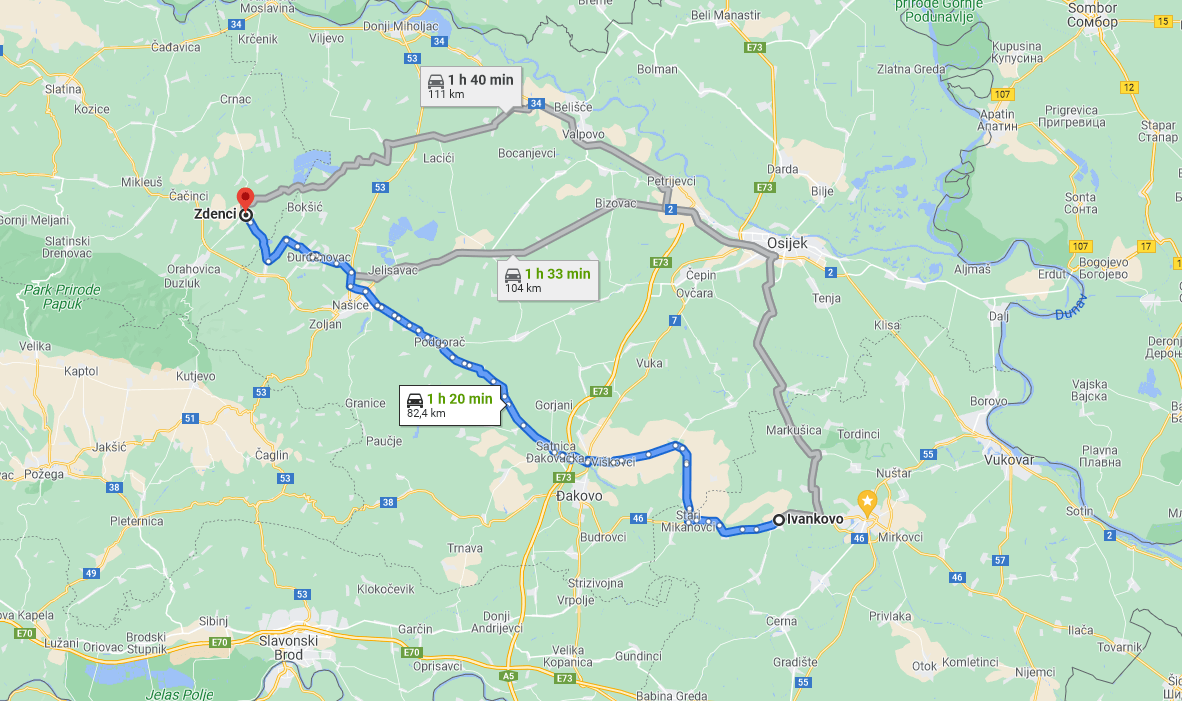
Screenshot: Google Maps
In the end, one more realization popped up in my head. The amount of money I spent going to Zdenci by train, with taxi fees and everything else, I could’ve easily paid for a cheap, discount flight to another country or go to Dubrovnik or Split by plane, possibly, even a discount two-way ticket. This wasn’t cross-country travel, we were literally going to another Slavonian place, which yes, seems far but it’s truly not. From Ivankovo to Zdenci, traveling by car, on the D515 road, that goes by the city of Đakovo, takes around an hour and a half (82,4 kilometers). From Osijek to Zdenci, it takes an hour without traffic (around 70 kilometers) and the railway has the same route as the roads and it took four hours more, including the travel back. This isn’t how it was before. How can we travel longer in 2022 than in the 1980s?
Slavonia always lived on railway infrastructure - most of the people still work there. It’s still a huge factor in our lives and not everyone has the possibility to own a car and drive it wherever. The lack of passengers led to fewer railway lines but lack of investment and nonsense renovating led to fewer of those same passengers. After thinking about everything my friend and I went through to see our friend for two hours; I came to this conclusion: get money for a drivers' license and buy a car. Hopefully, the future brings positive changes; the old love for train travel comes back with passengers that spent their youths traveling in them and future youth start bringing back the reputation this part of Croatia always had - one of the most important railway hubs in Europe.
For more on travel in Croatia, follow TCN's dedicated page.
Sports Culture in Slavonia: How One Tournament Became a Way of Life
30 January 2022 - Croatia, in comparison to other countries in Europe, is relatively small. However, what’s really beautiful about it is the diversity of every single region in terms of tradition, culture, the mentality of the people, and more. Sport fits that narrative as well. This is a story of how small Slavonian villages lived and still live through sports during summer. A look at sports culture in Slavonia.
When it comes to summer in Croatia, most of the residents in Vukovar - Srijem County think about how can they “escape” the unbearable Slavonian heat and relax on the beautiful Adriatic coast with no obligation to anything. Unfortunately, people who are unable to afford the trip to the coast stay in and brainstorm what to do to “kill” time. Summer sports events became one of them and stayed relevant even today. The main question is, when did this all start? How have these tournaments become so integral for residents of small Slavonian communities?

My father preparing for the football tournament in the early 70s, Private album/Dora Naletilić
According to Bijelić (2008) and his article The Beginning of Playing Football in Đakovo, “it was started by students who, over summer school holidays, stayed in the cities that did not abound that much entertainment for young people. Sports, or in this case, football, was supposed to enrich the social life of the place, expand the possibilities of creative expression and in socially acceptable way articulate the accumulated youthful energy.” There weren’t dressing rooms where participants could get changed in sports gear or leave their personal stuff. It was an open meadow with no shade, exposed from all angles. However, that did not stop anyone, they just wanted to play football.
Growing up in a Slavonian village during the 90s and 00s had its pros and cons but the biggest advantage was definitely sports tournaments that took place during summer school holidays. The anticipation could always be felt near the end of the school semester. Teams participating would be revealed and speculation would begin: Who is playing for which team? Who is leading them? Our neighbour? Someone’s brother? Sister? Cousin? Some guy from another village who was a professional athlete? It seems silly to the outsiders but for us, it was a highlight of the year. It started with Municipality Day, a village fair celebrating a local saint (in this case St. John the Baptist), an amusement park that entertained kids during the day and it continued until the evening when the summer tournament was about to start. It didn’t have a particularly fancy venue; a playing field made out of concrete suited for handball and bleachers which were made out of the same material. Nothing special. Until it was.
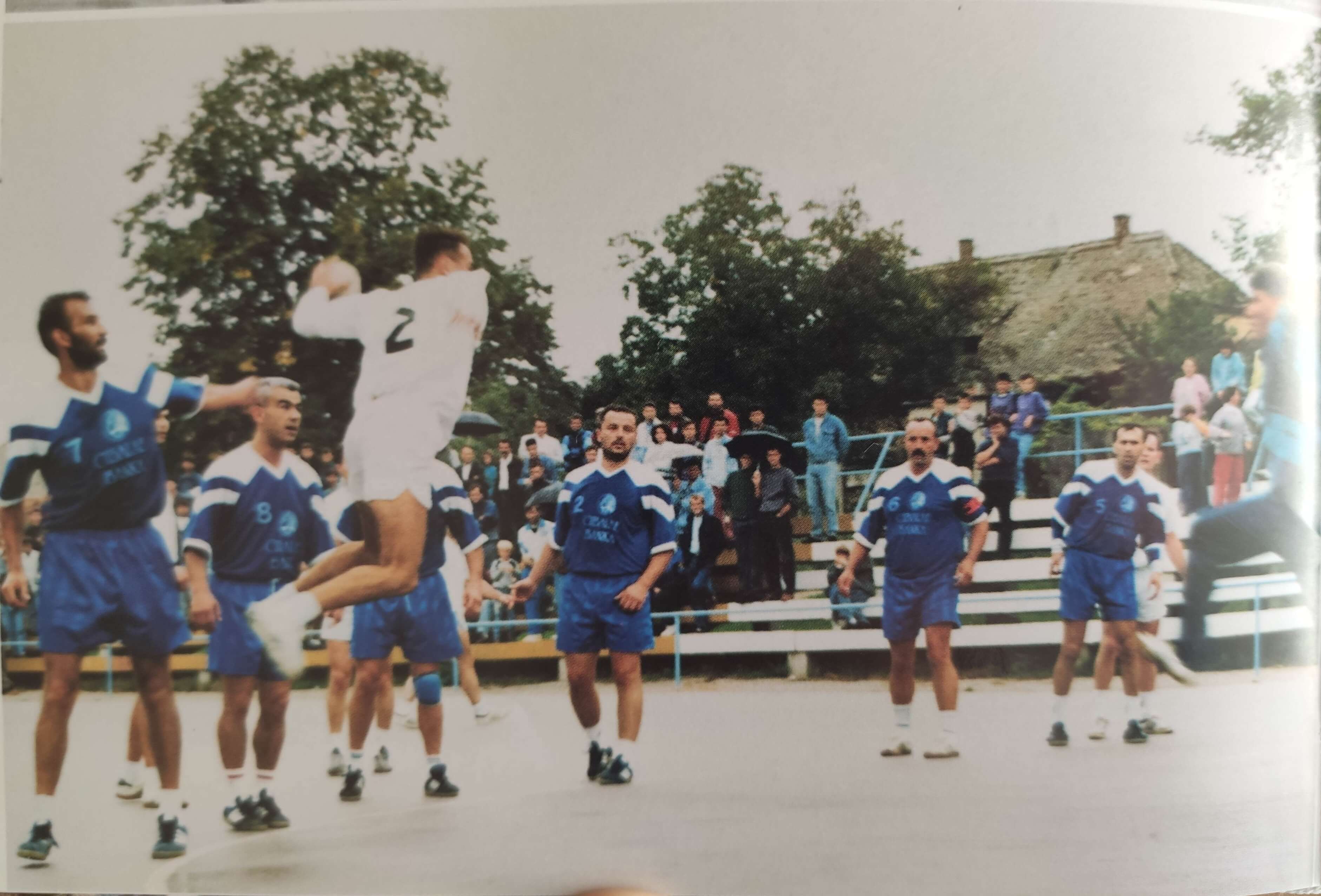
An old concrete field that was used for handball and football in the late 80s, "Rukometni klub u Ivankovu 1966 - 2016" book by Handball club "Cestorad" Ivankovo
The organization consisted of three main segments: the staff that kept the score and records of participants, sponsors of the venue, and of course snack bars, which were filled with local cuisine. When that was settled, the tournament could begin. The whole village of Ivankovo would participate in the event and support their own favorite teams. The supporting crowd would take out their own sirens that firefighters would use in their interventions and the atmosphere would seem like there was a huge national football cup game going on. Parents would drink their beers and nibble the seeds with their children, while the older folks would loudly comment on everything happening on the field. It was a picture-perfect small-town atmosphere that we (now young adults) think fondly of.
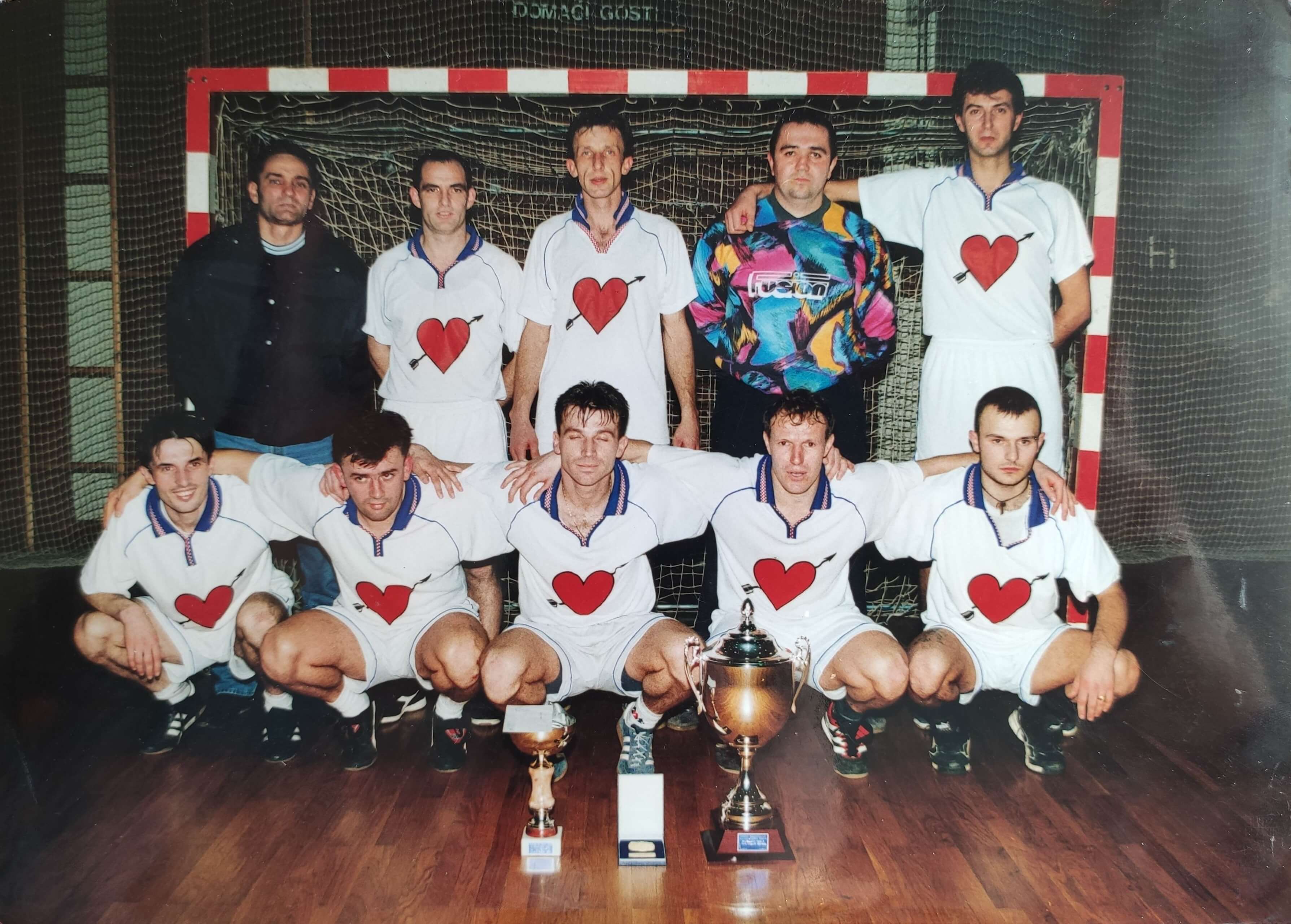
"Lutajuća srca" after winning the summer tournament, the early 2000s, Private photo album/Dora Naletilić
Looking through the old photos reminded me why I started loving sport in the first place. My father was constantly participating in villages sports tournaments, mostly football ones, where he would have his own team competing for the title of the best in the village. His team was called “Lutajuća srca” (Wandering hearts) and has won multiple tournaments over the years. One of the best feelings in my life was carrying that trophy across the field after excruciating penalties and the sound of the fellow villagers clapping and cheering.
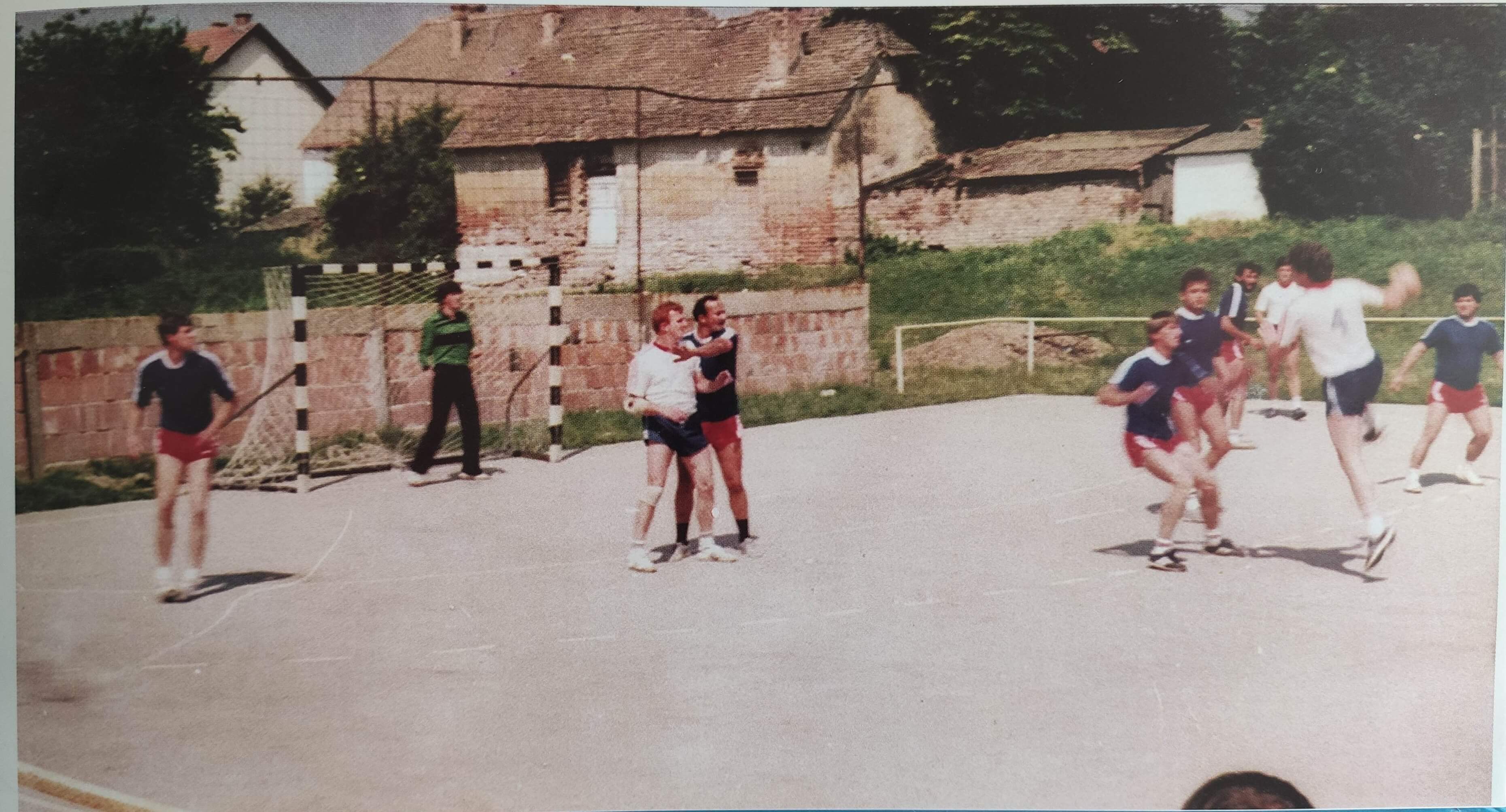
Old handball tournaments in 1986, "Rukometni klub u Ivankovu 1966 - 2016" book by Handball club "Cestorad" Ivankovo
Football wasn’t the only sport Ivankovo had to offer, handball always had and still has a big impact on sports fauna in this part of Slavonia. When the sports arena in Ivankovo was built, children and senior players finally had a venue where they could play their league games. After the mass, every Sunday morning people would go to the games and root for their team. Generations of families were always part of sports teams (including my brothers) and it stayed like that even today.

Sports arena opened in 2008, "Rukometni klub u Ivankovu 1966 - 2016" book by Handball club "Cestorad" Ivankovo
The annual summer tournament in Ivankovo maybe doesn’t have that charm it had 20-30 years ago but it’s still happening to this day. Sports games as a part of the “Summer in Ivankovo” are still going strong with other surrounding villages having their own traditional events. This only just shows that nothing in this country is taken for granted; if we love it, then we truly love it with all our hearts and souls. Sport is not just entertainment here, it’s the way of life. 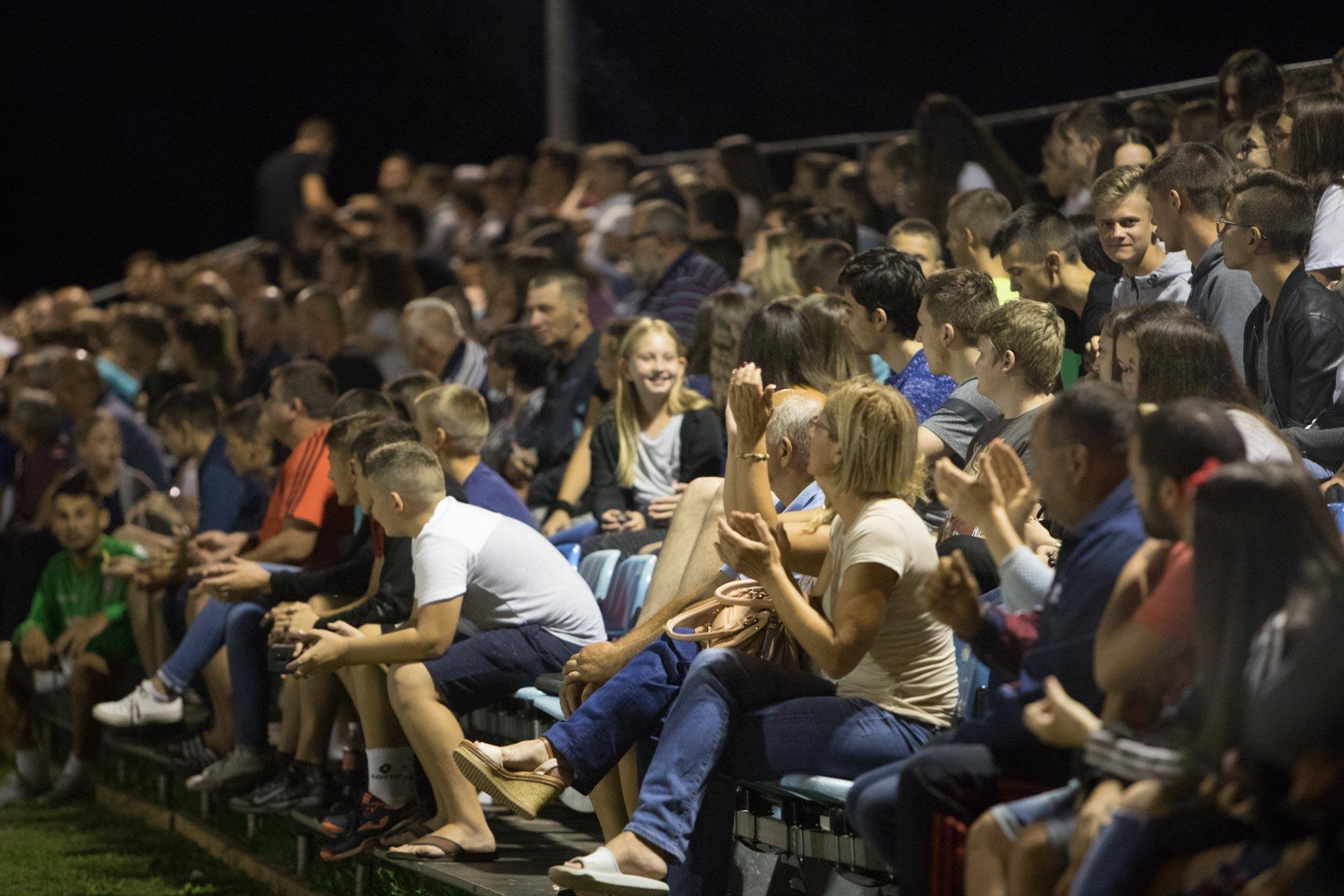
The crowd at a sports event during "Summer in Ivankovo", photo credit: Ivankovo.info
To read more about sport in Croatia, follow TCN’s dedicated page.
Hidden Village of Progress: Ivankovo - Great Example of Slavonia Full of Life
January 25, 2022 - There are many obstacles the Slavonia region faced in the last two decades, but one of the most prominent ones is the emigration of young people who do not see a future for them here. However, one particular village in the eastern interfluve of the Drava and Sava rivers in Vukovar-Srijem County stood out from the rest. Meet Ivankovo.
Ivankovo is located in Vukovar-Srijem County, west of the historical city of Vinkovci, along a busy road that has passed through that area since prehistoric times. The design reminds of a typical traditional Slavonian village; the houses are located on long narrow plots, built on a regulation line, and the background is used for agricultural purposes. In addition, there are villages Prkovci and Retkovci, which are also part of the Ivankovo Municipality. Furthermore, its geographical and traffic location connects cities like Đakovo, Osijek, Vinkovci, Vukovar. Also, the motorway A3 Bregana - Lipovac, industrial track, airport Klisa, the port of Vukovar, and neighbouring municipalities Vođinci, Stari Mikanovci, Andrijaševci, Cerna, and Jarmina. Historically, the municipality of Ivankovo was always highly populated (unusual for villages in Eastern Croatia) with, according to the 2011 census, 6,194 residents in Ivankovo, 1,263 residents in village Retkovci and 549 residents in Prkovci. However, the 2021 census showed that the emigration of people, especially young people, did not bypass Ivankovo. Only Vukovar-Srijem County has 19 percent fewer people than ten years prior, with just Ivankovo losing 1,091 residents. These devastating numbers only show how much this part of the country suffered since the Homeland War, and the possible potential Eastern Croatia can offer was neglected for decades. Recently, however, things started to change.
Croatia joined the European Union on the 1st of July 2013 and opened its borders to new opportunities, which was partly a curse if we consider the emigration, but Euro funds all of a sudden became available and small communities and districts like Ivankovo saw the opportunity to use its resources to develop their infrastructure. After the change of the government in 2017, hard work needed to begin. One of the first obstacles elected officials had to face were decrepit institution buildings (school, kindergarten, fire station), sacral objects, financial transactions pointlessly directed at projects that did not make any sense, engaging locals in public events, and keeping young residents and their potential families in the district of Ivankovo. This was only a drop in the ocean, but with the available European funds and fixes in municipalities' budgets, projects of developing neglected villages finally started.
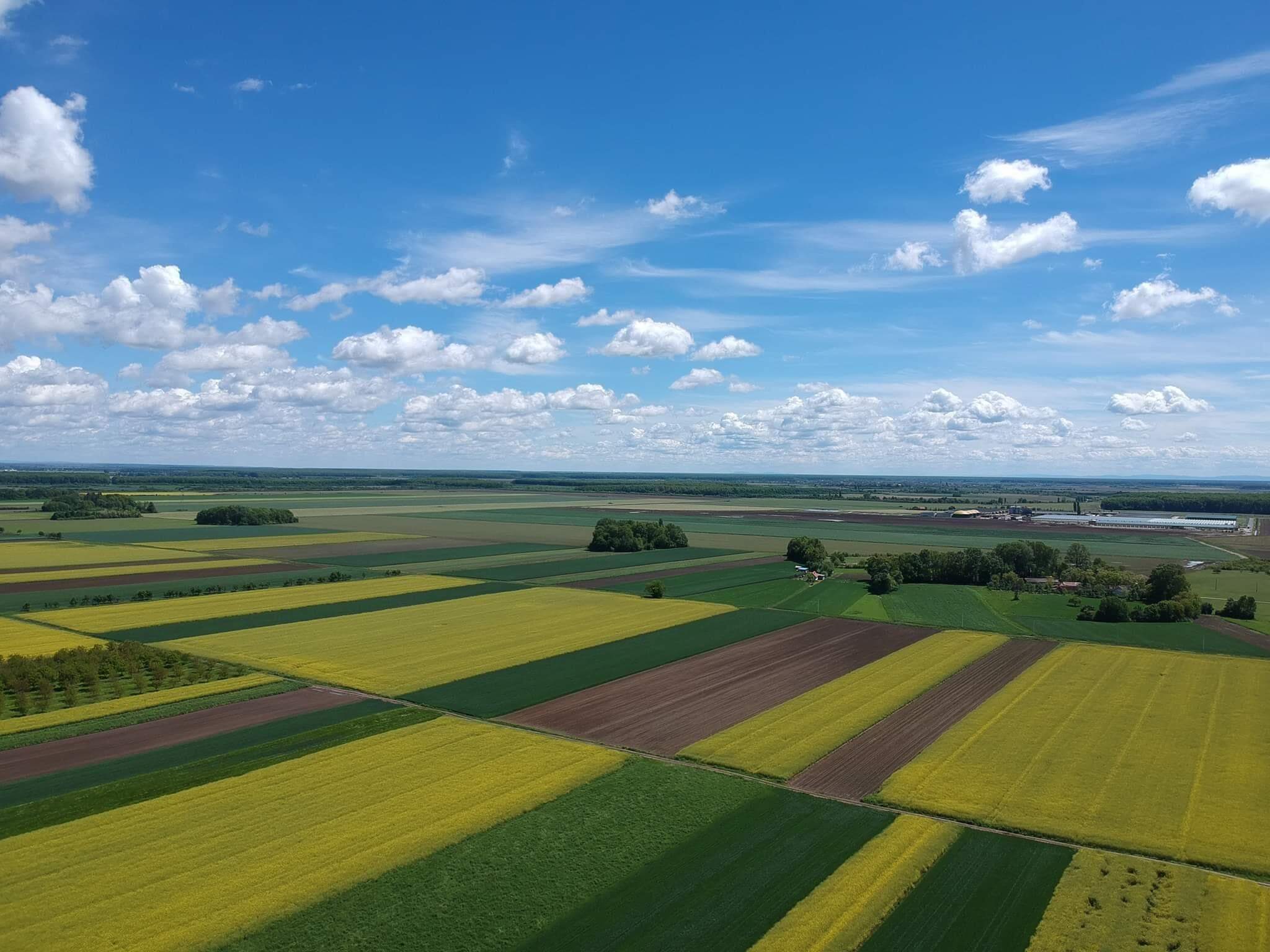
foto: Facebook/Ivankovo.info
The first big project happened at the Industrial Zone Ivankovo, which was, after many years, finally put into function and allowed local entrepreneurs to invest and develop their own establishments. This encouraged employment, of which 70 percent needed to be from the Municipality of Ivankovo.
Local utilities also needed a massive upgrade, so a communal society was formed and today employs 26 people from the Municipality, who take care of the village’s environment every day. Public spaces like children’s playgrounds, parks, and other areas were built and renovated. Furthermore, part of the Revitalization plan included planting 300 trees across the Municipality. The roads have been renovated, built where needed, and the sewer system finally connected with households across the villages of Ivankovo, Prkovci, and Retkovci. Waste management is still a huge problem across Croatia but the local government of Ivankovo, with the help of EU funds, enabled the construction of a recycling yard which highlights the need for sorting and recycling the waste. 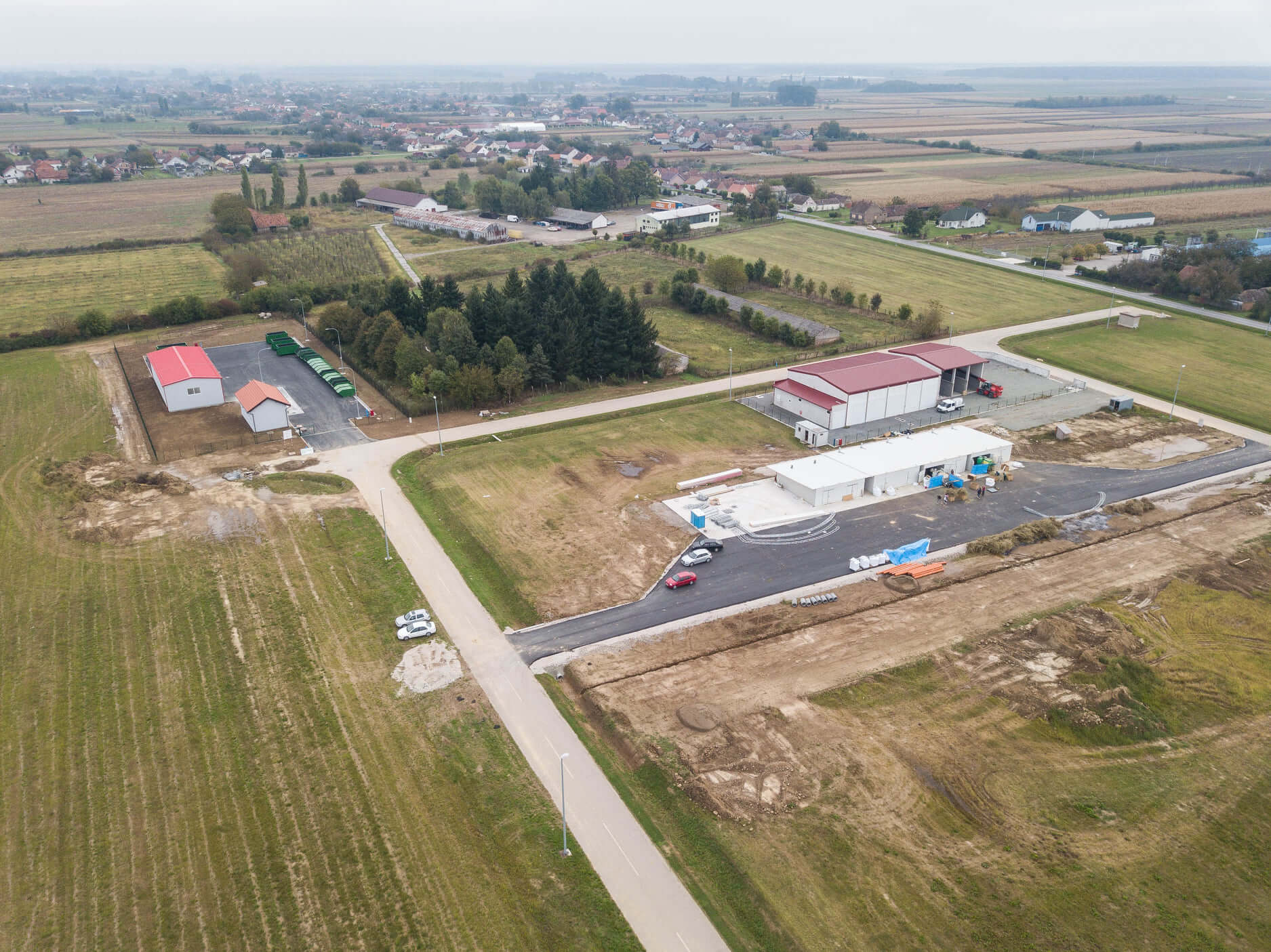
Industrial Zone Ivankovo, foto: Facebook/Marko Miličević - načelnik Općine Ivankovo
Social incentives: co-financing the purchase of houses for young families, infant benefits, free preschool educations, new kindergarten buildings, free student transportation, student scholarships, and other perks of the demographic policy all came into fruition since 2017, and it helped residents of Ivankovo immensely.
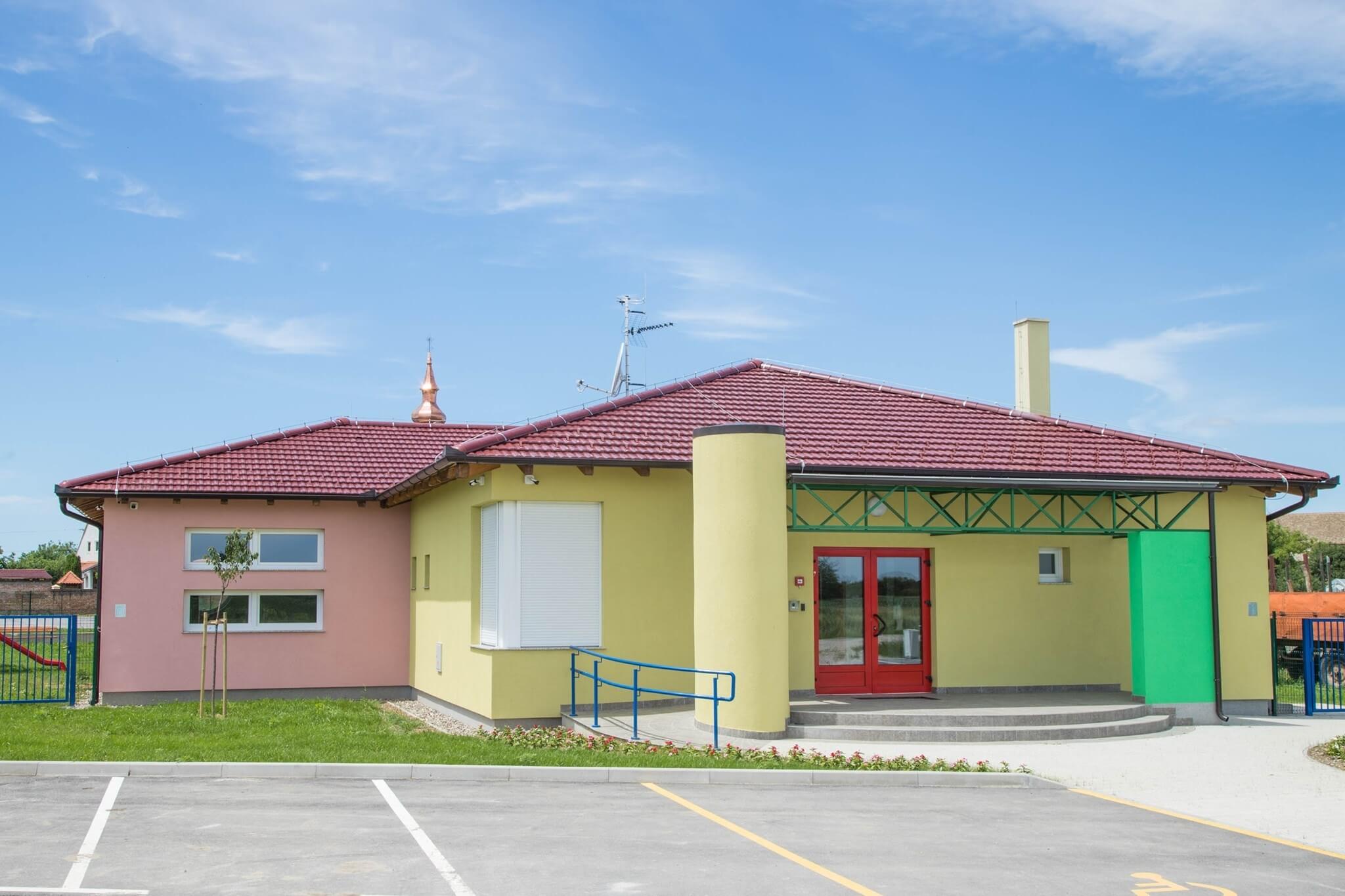
Newly Built Kindergarten Ivankovo, foto: Facebook/Dječji vrtić Ivankovo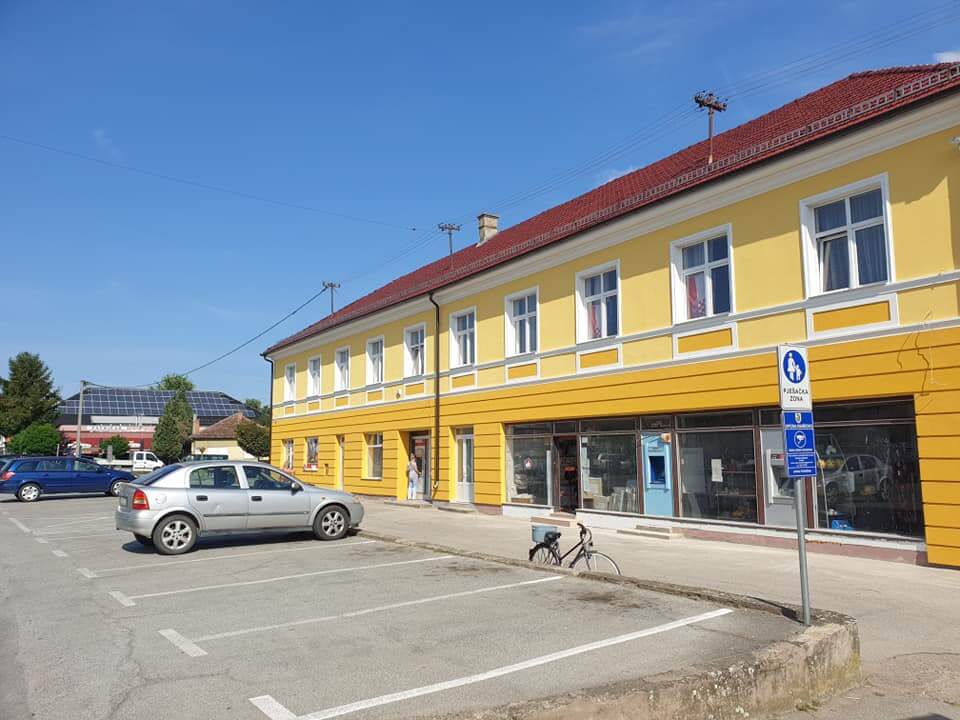
Renovated old government building, foto: Facebook/Marko Miličević - načelnik Općine Ivankovo
This is only a drop in the ocean that shows if people put in a little effort and genuinely care about the development of the community in which they reside, Slavonia can truly be better. When asked about these achievements and progress the Municipality went through the last few years, Mayor Marko Miličević says that “this is only the beginning. It was hard, we had to fix a lot of issues that were rooted here for years, but with the help of my colleagues and finding resources to finance our goals of development of this region, we started something that we can only continue to build on.”
He continues: “The most important part was listening to people, getting to know them again and recognizing their needs because before they weren’t being listened to.”
Plans seem ambitious as well: “This Municipality has so much potential and highly educated people, with more than 100 faculty students every year who are studying economics, IT, electrical engineering and computing, food technology, medicine, etc., which are all the fields that are the future of this country.” he says.
Furthermore: “We have numerous development projects in works that we want to be finished in the next few years: further development of Entrepreneurial Zone Ivankovo, a tourist, sports and recreation center, a retirement home, catering and tourist zone, etc.
Mayor Miličević ends on a hopeful note: “We have achieved the future of development in the Municipality of Ivankovo, and we plan to continue it.” 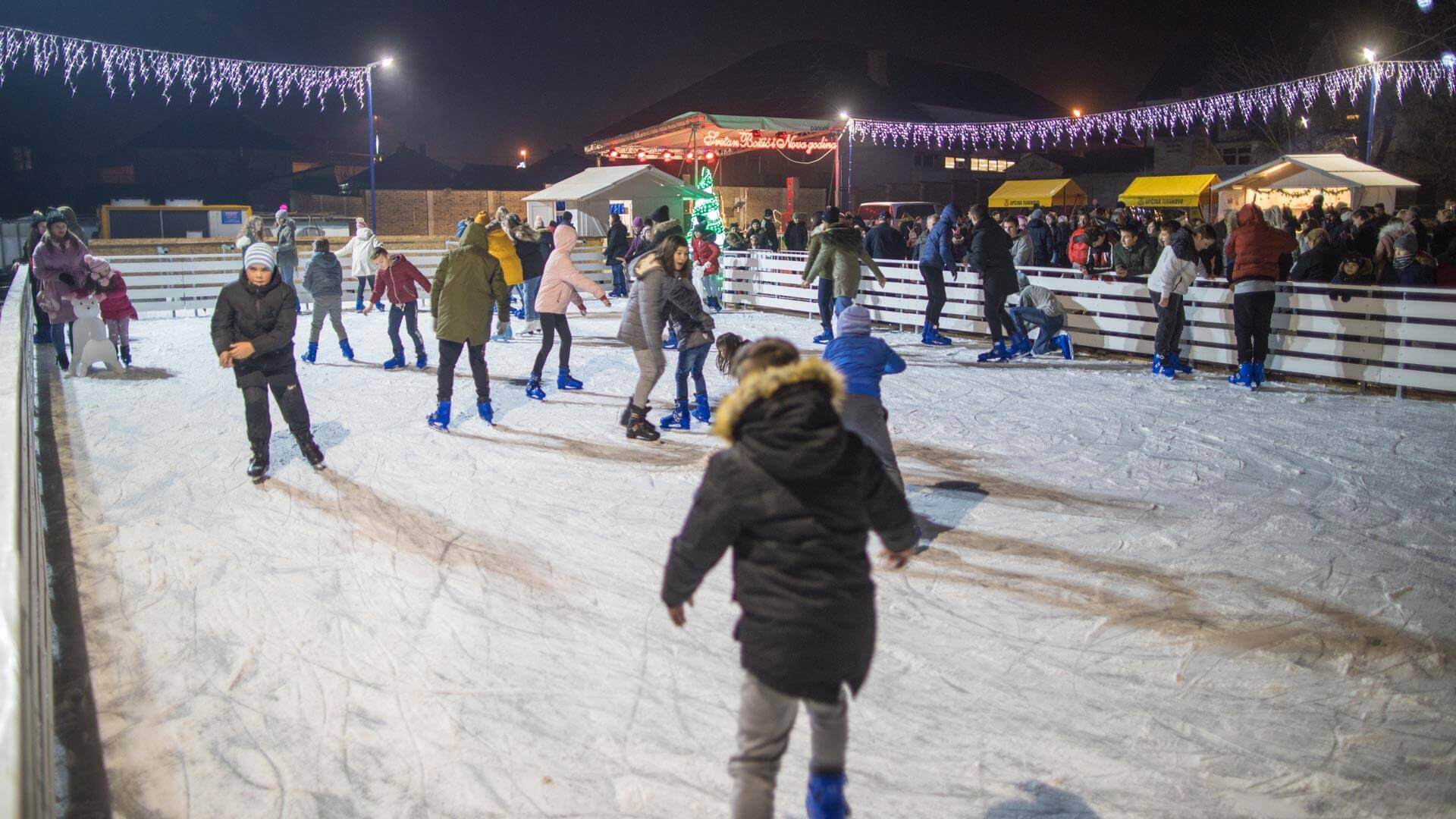
Winter Joys During Christmas Holidays, foto: Facebook/Marko Miličević - načelnik Općine Ivankovo
Sports recreation, social events, concerts, the inclusion of young people in said events, and more only shows that the district of Ivankovo finally livened up and restored a little bit of life that resided here 30 - 40 years ago. Multiple “parasites” wormed themselves in the core of Slavonia and slowly but surely exhausted the region to the limit. People settled for what was enough for them, for what was given to them, and some of them left because they couldn’t see their future here. Generations of high schoolers heard every day that there isn’t a place for them here in Slavonia, that there are many people like them who never found themselves here and had to leave because of it, and that they need to leave as well.
The hope for Slavonians has been stepped on for years, but the current changes slowly every day. Osijek started it, Vukovar and Vinkovci are following it. Still, a village like Ivankovo can only be an example of how much power its residents have and use their potential to make, how one former foreign politician said, Slavonia great again.
For more, check out our dedicatedlifestyle section.


